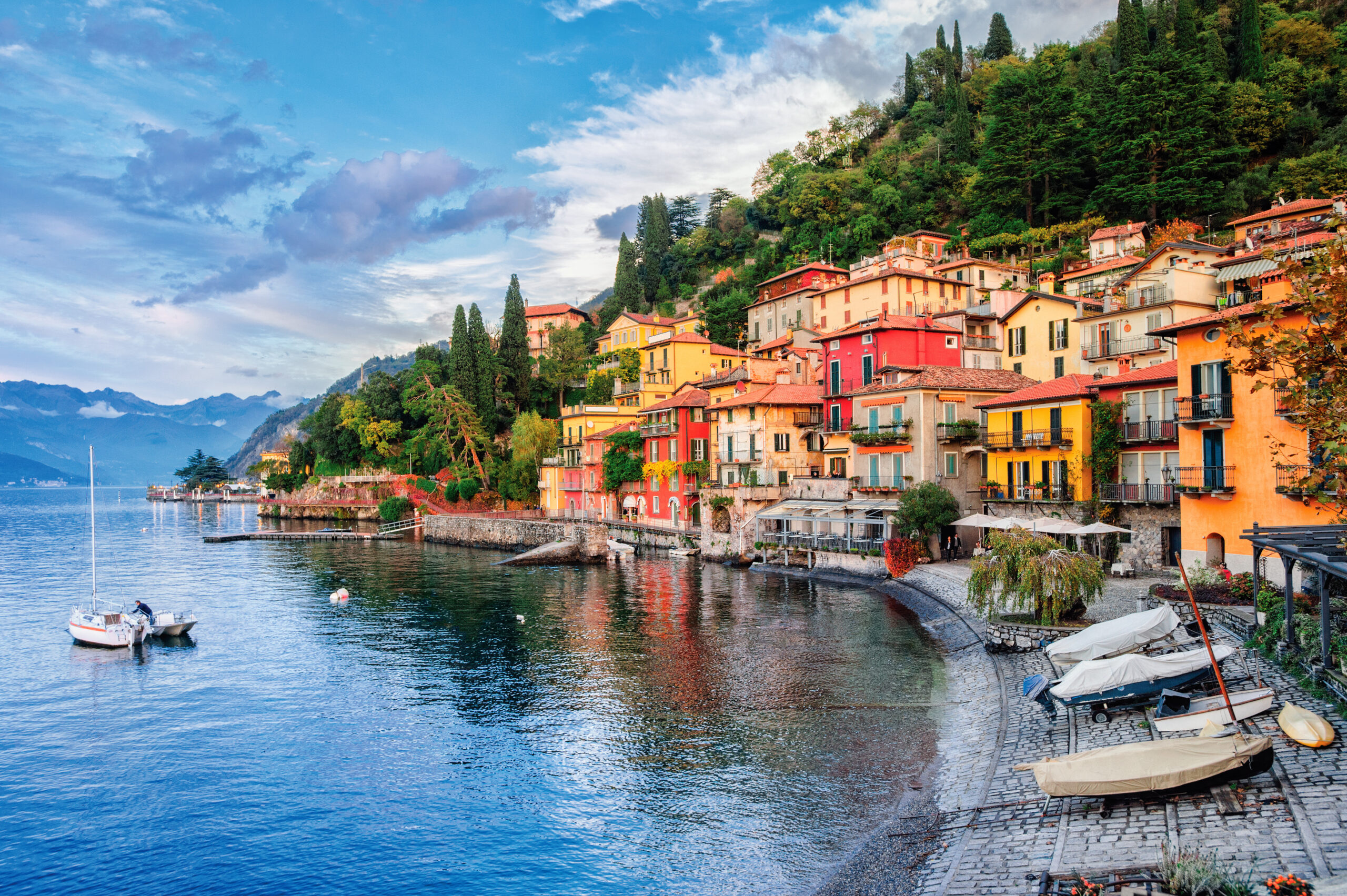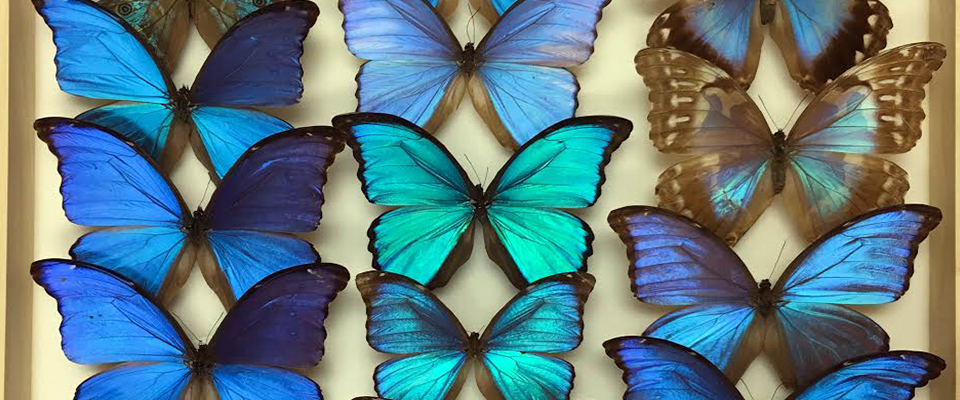Blue is an elusive color. Crush the feathers of a blue jay or the wings of a Morpho butterfly and you’ll see gray dust; our perception of their electric blue hue depends on microscopic structural features that bend the light just so. The blue sky is merely a mirage of refracting light, as are blue eyes. Truly blue pigments are exceedingly rare in the natural world, which is perhaps part of their allure—blue is our favorite color, according to an international, cross-cultural survey.
It is certainly a profound color for Olga Alexopoulou, who has developed a new hue called Quantum Blue in collaboration with Berkeley Lab chemists. The Greek artist came to UC Berkeley to pin down a shade that has tantalized her since childhood when she used to gaze at the sky during the so-called blue hour, “that brief period of twilight before sunrise or after sunset, when the blue of the sky seems like it has an otherworldly glow—a fluorescence, if you like.”
In the past, people relied on crushed stones (the ancient Egyptians used azurite) and dried leaves (craftsmen in Japan still use indigo) to concoct blue pigments. Alexopoulou teamed up with researchers in the lab of Berkeley chemist (now provost) Paul Alivisatos to make the perfect “blue hour” blue, using nanotechnology.
Alexopoulou describes the blue hour, “that brief period of twilight before sunrise or after sunset, when the blue of the sky seems like it has an otherworldly glow—a fluorescence, if you like.”
Alexopoulou is not the first to turn to the laboratory to engineer a new blue. In the late 1950s, Yves Klein created International Klein Blue using a synthetic binder created by a chemical company, and in 2009 chemist Mas Subramanian stumbled on an inorganic blue pigment that earned a place in the Crayola box (“Bluetiful”).
Nanoparticles—more specifically, quantum dots—present a new and exciting frontier in color technology. A quantum dot is a nanoscale particle of a semiconducting material that because of its infinitesimal size follows the laws of quantum physics, in which electrons become excited and make leaps in their orbit around atoms.
In the case of Quantum Blue, particles of phosphor absorb UV light and convert it to a different wavelength (or fluoresce). The result is a pure, radiant blue like one might see at dusk.
After months of tweaking the formula, Alexopoulou recalls the moment in August 2018 when she finally got to paint with the luminance of the twilit sky in the laser room of the lab: “As I was painting I couldn’t really believe it. It took me a while to realize that it was finally a reality. I painted a scene from the island I spent all of my childhood summers at—a beach where I used to observe the blue hour.”
Although some engineered pigments and dyes have practical purposes (clothes treated with indigo, for example, are resistant to flame and samurai used them for their antimicrobial properties), Quantum Blue remains a solely aesthetic achievement—as far as we know.
From the Winter 2019 issue of California.





















